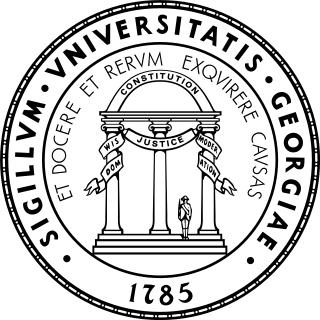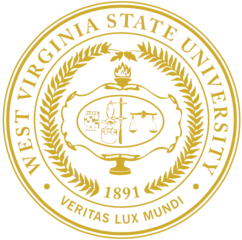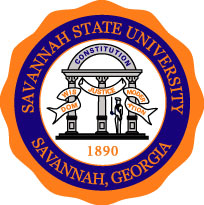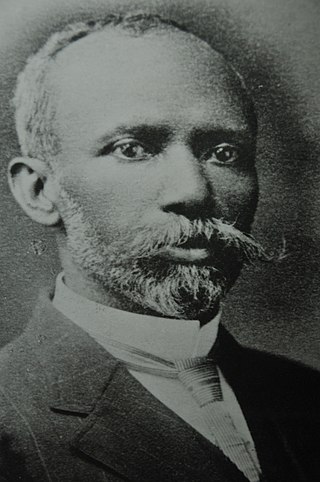Related Research Articles

Southern Polytechnic State University was a public, co-educational, state university in Marietta, Georgia, United States approximately 20 miles (32 km) northwest of downtown Atlanta. Until 2015, it was an independent part of the University System of Georgia and called itself "Georgia's Technology University."

The University of Delaware is a privately governed, state-assisted land-grant research university located in Newark, Delaware. UD offers four associate's programs, 163 bachelor's programs, 136 master's programs, and 64 doctoral programs across its ten colleges and schools. The main campus is in Newark, with satellite campuses in Dover, Wilmington, Lewes, and Georgetown. With 24,221 students as of Fall 2023, UD is the largest university in Delaware by enrollment.

The University of Nebraska–Lincoln is a public land-grant research university in Lincoln, Nebraska, United States. Chartered in 1869 by the Nebraska Legislature as part of the Morrill Act of 1862, the school was the University of Nebraska until 1968, when it absorbed the Municipal University of Omaha to form the University of Nebraska system. It is the state's oldest university and the flagship institution of the state-wide system. The university has been governed by the Board of Regents since 1871, whose members are elected by district to six-year terms.

Oklahoma State University–Stillwater is a public land-grant research university in Stillwater, Oklahoma. OSU was founded in 1890 under the Morrill Act. Originally known as Oklahoma Agricultural and Mechanical College, it is the flagship institution of the Oklahoma State University System that enrolls more than 34,000 students across its five institutions with an annual budget of $1.69 billion for fiscal year 2024. As of Fall 2023, 26,008 students are enrolled at the university. OSU is classified among "R1: Doctoral Universities – Very high research activity". According to the National Science Foundation, OSU spent $198.8 million on research and development in 2021.

The University of Georgia is a public land-grant research university with its main campus in Athens, Georgia, United States. Chartered in 1785, it is one of the oldest public universities in the United States. It is the flagship school of the University System of Georgia.

West Texas A&M University is a public university in Canyon, Texas. It is the northernmost campus of the Texas A&M University System and accredited by the Southern Association of Colleges and Schools (SACS). It was established on September 20, 1910, as West Texas State Normal College as one of the seven state-funded teachers' colleges in Texas.

North Carolina Agricultural and Technical State University is a public, historically black, land-grant research university in Greensboro, North Carolina. It is a constituent institution of the University of North Carolina System. Founded by the North Carolina General Assembly on March 9, 1891, as the Agricultural and Mechanical College for the Colored Race, it was the second college established under the provisions of the Morrill Act of 1890, as well as the first for people of color in the State of North Carolina. Initially, the college offered instruction in agriculture, English, horticulture and mathematics. In 1967, the college was designated a Regional University by the North Carolina General Assembly and renamed North Carolina Agricultural and Technical State University.

Abraham Baldwin Agricultural College (ABAC) is a public college in Tifton, Georgia. It is part of the University System of Georgia and offers baccalaureate and associate degrees. The college is named after Abraham Baldwin, a signer of the United States Constitution from Georgia and the first president of the University of Georgia.

West Virginia State University (WVSU) is a public historically black, land-grant university in Institute, West Virginia. Founded in 1891 as the West Virginia Colored Institute, it is one of the original 19 land-grant colleges and universities established by the second Morrill Act of 1890, which evolved as a diverse and inclusive campus. Following desegregation, WVSU's student population slowly became more white than black. As of 2017, WVSU's student body was 75% white and only 8% African-American.
The history of Michigan State University dates back to 1855, when the Michigan Legislature established the Agricultural College of the State of Michigan under the encouragement of the Michigan State Agricultural Society and the Michigan Farmer, the state's leading agricultural periodical. As the first agricultural college in the United States, the school served as a model for other institutions of its kind established in the period, to give an instance, the Agricultural College of Pennsylvania.

Joseph Rickelson Williams was an American politician, a Republican Michigan Senate Senator, and the 14th lieutenant governor of Michigan. He was also the first president for the Agricultural College of the State of Michigan, now Michigan State University.

Jonathan Clark Rogers was President of the University of Georgia (UGA) in Athens from 1949 until 1950.

Savannah State University is a public historically black university in Savannah, Georgia. It is the oldest historically black public university in the state. The university is a member-school of the Thurgood Marshall College Fund.
Valdosta State University was established in 1906 in Valdosta, Georgia. South Georgia State Normal College began as a two-year teaching college in 1913 and was an all-female school until 1950 when the name was changed to Valdosta State College. VSC experienced rapid growth in the 1960s and 70s in student population and in construction on campus. In 1993 Valdosta State achieved university status and became the second regional university in the state of Georgia. Since its founding VSU has grown into a co-educational regional university with over 12,000 students.

West Virginia University is a public research university in Morgantown, West Virginia, United States. Founded as an agricultural college, WVU has developed into a major research university with an emphasis in neurosciences, forensics, and biometrics.

The University of North Georgia (UNG) is a public senior military college with multiple campuses in Georgia, United States. It is part of the University System of Georgia. The university was established on January 8, 2013, through a merger of North Georgia College & State University and Gainesville State College. Campus locations include Dahlonega, Oakwood, Watkinsville, Blue Ridge, and Cumming.
On January 30, 1889, Governor Edward Stevenson of the Idaho Territory signed the territorial legislature's Council Bill No. 20, championed by attorney Willis Sweet and legislator John W. Brigham, which officially established the UI as the upcoming state's land-grant institution. Nearly four years later, the university opened for classes on October 3, 1892. The choice of location for the University of Idaho was an "Olive Branch of Peace" by Gov. Stevenson for his actions in stymieing the nearly successful effort to detach the north Idaho Panhandle and join the state of Washington.
The University of North Georgia was first established at the site of its current campus in Dahlonega, Georgia in 1873 as North Georgia Agricultural College (NGAC). In 2013 North Georgia College & State University was consolidated with Gainesville State College to form the University of North Georgia.
The history of North Carolina Agricultural and Technical State University, the first land grant college for people of color in the state of North Carolina, can be traced back to 1890, when the United States Congress enacted the Second Morrill Act which mandated that states provide separate colleges for the colored race. The "Agricultural and Mechanical College for the Colored Race" was established On March 9, 1891 by an act of the General Assembly of North Carolina and began in Raleigh, North Carolina as an annex to Shaw University. The college made a permanent home in Greensboro with the help of monetary and land donation by local citizens. The college granted admission to both men and women from 1893 to 1901, when the board of trustees voted to restrict admission to males only. This policy would remain until 1928, when female students were once again allowed to be admitted.

William C. Jason was an American college president and minister. He is the longest serving president in the history of Delaware State University, a historically black institution of higher education. In assuming the leadership of the fledging college in only the fourth year of its operation, Jason's long tenure provided much stability to the institution and many of the typical college activities were begun under his watch.
References
- ↑ Roberts, William Pittman (1998). Georgia's Best Kept Secret: A History of North Georgia College. Dahlonega, Ga: Alumni Association of North Georgia College. Archived from the original on 2012-03-10. Retrieved 2010-01-08.
- 1 2 Diamond, Laura (January 13, 2013). "Challenges remain for Georgia's new merged colleges". Atlanta Journal-Constitution. Retrieved September 18, 2013.
- ↑ Amerson, Anne Dismukes (Spring 2010). "The Rich and Enduring Legacy of William P. Price". Georgia Backroads: 46–9. Retrieved 2010-11-26.
- ↑ "Dahlonega New Georgia Encyclopedia". University of Georgia Press. Retrieved 2009-08-06.
- ↑ "NGCSU New Georgia Encyclopedia". University of Georgia Press. Retrieved 2009-08-06.